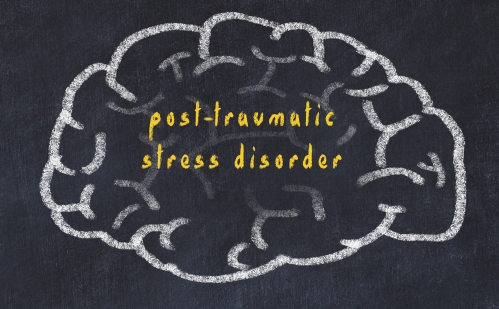What is coma?
Coma is a state of prolonged unconsciousness whereby the person is unresponsive to their environment. The person seems to be sleeping. However, they cannot be awakened by any stimulation, including pain. There are many condition which may lead to coma such as head injury, alcohol or drug intoxication, stroke, severe diabetes, severe low blood sugar level or a brain tumour amongst others.
Coma is a medical emergency requiring quick and appropriate response from doctors to preserve brain function and life. For doctor to give the appropriate treatment, the cause needs to be identified first either using blood tests or brain scans. Coma can last from weeks to even years. According to the Guinness World Records, Elaine Esposito stayed in a coma for 37 years and 111 days.
What are the causes of coma?
There are several causes which may result into a coma and these include:
- Traumatic head injuries: Trauma to the head can cause the brain to bleed or swell which may result in compression of the brain against the brain stem- it is the posterior part of the brain which is responsible for involuntary actions such as breathing and heartbeat.
- Anoxic brain injury: This is a condition when your brain does not get any oxygen for a few minutes which results in death of your brain tissue. This may result after a heart attack, drowning, head injury, stroke, drug overdose or poisoning.
- Brain tumours: Brain tumours causes your brain to compress against the brainstem leading to coma.
- Diabetes: Diabetes can cause your blood sugar level to be too high (hyperglycaemia) or too low (hypoglycaemia) which can both result in a coma. This type of coma is usually reversible the blood sugar level is returned back to its normal level but prolonged hypoglycaemia may lead to permanent brain damage and persistent coma.
- Infections: Swelling due to severe infection of the brain (encephalitis) or the tissue surrounding the brain (meningitis) may result into severe brain damage or a coma.
- Alcohol and drugs: Alcohol and drug overdose may result in a coma.
- Bleeding: Bleeding in the layers of the brain may lead to coma due to compression against the injured side and swelling.
- Seizures: Ongoing seizures (status epilepticus) can result in prolonged unconsciousness and coma.
- Toxins: If the body cannot remove naturally occurring substances properly, these may accumulate to toxic levels leading to brain damage and coma. Examples include excess urea due to kidney failure, excess ammonia due to liver failure or excess carbon dioxide from a severe asthma attack.

What are the signs and symptoms of a coma?
The signs and symptoms of a coma are listed below:
- Pupils not responding to light which indicates that the brainstem reflexes are depressed.
- Closed eyes.
- Limbs are unresponsive, except for reflex movements.
- Breathing is irregular.
- Unresponsiveness to painful stimuli, except for reflex movements

Other signs and symptoms may be present according to the underlying cause which varies significantly. As an example, in diabetic coma other signs and symptoms include extreme dry mouth or thirst, sweet fruity breath, nausea and vomiting, confusion, drowsiness and dry skin.

Making a diagnosis
To make a diagnosis, doctors will take a detailed history from friends and relatives of the person as people in coma cannot express themselves. The information required about the affected person include:
- Signs and symptoms observed just before the loss of consciousness.
- Whether the loss of consciousness was sudden or gradual.
- Medical history and surgical history of the person.
- Any recent change in the person’s behaviour or medical condition.
- Any knowledge about the person using illicit drugs or a history of alcohol abuse.
After the history taking, the doctors will perform a thorough physical examination which will include:
- Observing the breathing patterns of the person.
- Assessing the person’s reflexes, movements, pupil size and response to painful stimuli.
- Testing the reflexive eye movements to have an idea about which part of the brain has been affected.
- Pushing warm or cold water in the person’s ear to observe the movement of the person’s eye. This test is called the caloric test.
- Examining the person’s body for bruises which may indicate the cause of the coma such as an injury to the head.

The doctor will take a blood sample to check for drug or alcohol overdose, carbon monoxide, poisoning. In addition, the blood samples will be used to test for the liver function, kidney function, thyroid hormone levels, blood glucose level, electrolytes and complete blood count. Furthermore, a sample of the person’s cerebrospinal fluid- a fluid surrounding the brain and spinal cord- to determine whether there is any underlying infection within the nervous system.
The doctor may order scans to locate the areas of brain injury and these include:
- Magnetic Resonance Imaging (MRI) scan: An MRI scan of the head is very useful in detecting damaged areas of the brain, brain stem or other deep brain structures which may be due to ischaemic strokes, tumours or brain haemorrhages amongst others. In addition, this imaging technique does not use x-rays to produce images. Instead, it uses powerful magnets and radio waves to produce detailed images of the brain.
- Computed Tomography (CT) scan: CT scan of the head can show the presence of brain haemorrhages, strokes and tumours amongst others. This imaging technique uses a series of x-rays to produce images of the head structures.
- Electroencephalography (EEG): EEGs are done if ever the doctor suspects that the cause of the coma might be due to seizures. This test measures the electrical activities inside the brain through small electrodes which are attached to the scalp.

What are the complications of coma?
There are several complications which may develop due to coma and these include:
- Bed or pressure sores
- Urinary tract infections
- Minor or major disabilities after recovery from the coma
- Entering a vegetative state- this is when a person is awake but does not show any signs of awareness- meaning that the person can open their eyes, blink, withdraw their hands if squeezed too hard and regulate their breathing and heartbeat without assistance. However, they cannot speak or perform actions that require conscious or thought intention and they also does not have awareness of their surrounding environment or themselves.
- Death

Expectations (prognosis)
The prognosis of a coma depends on the cause, duration of the coma, whether the problem can be corrected and the person’s health conditions. In some cases, once the problem is solved, the person may regain consciousness. However, if the brain damage is too severe, the person may be permanently disabled or never regain consciousness again. A coma may last for some days to several weeks but in some cases, it lasted for several years either ending with the person regaining consciousness or death.

Source:
J. Alastair, I. and Simon, M., 2016. Davidson's Essentials of Medicine. 2nd ed. London: ELSEVIER.
Parveen, K. and Michael, C., 2017. Kumar & Clarks Clinical Medicine. 9th ed. The Netherlands: ELSEVIER.
Young, B., 2020. Coma in adults.





